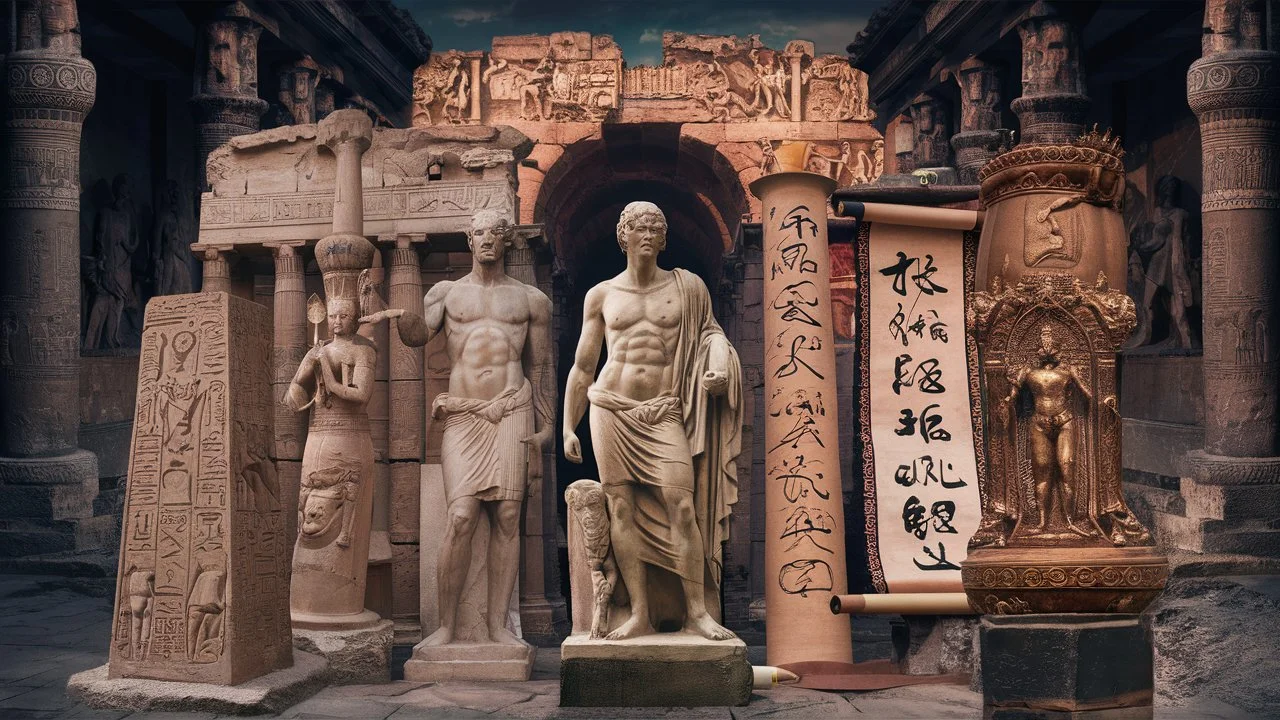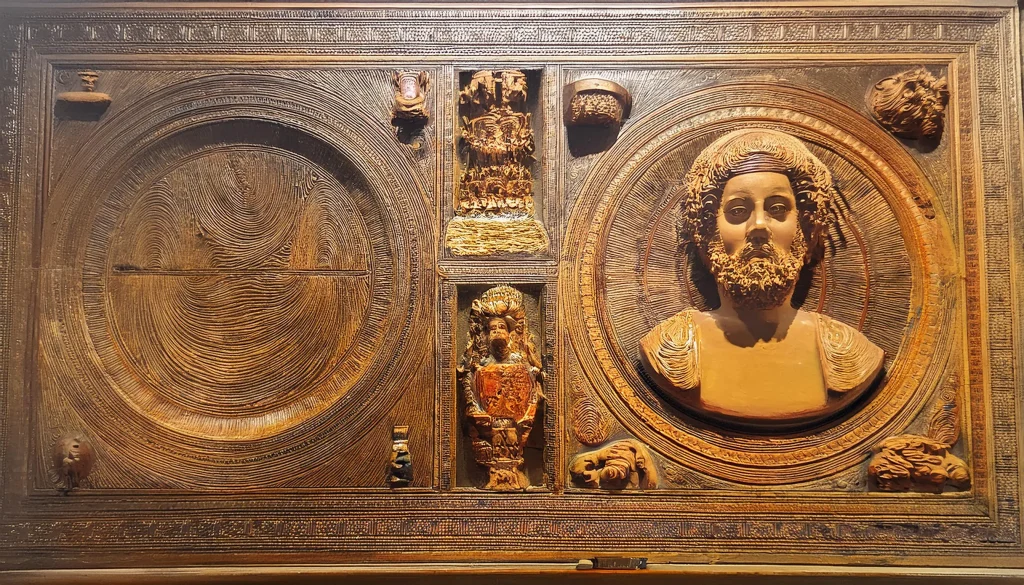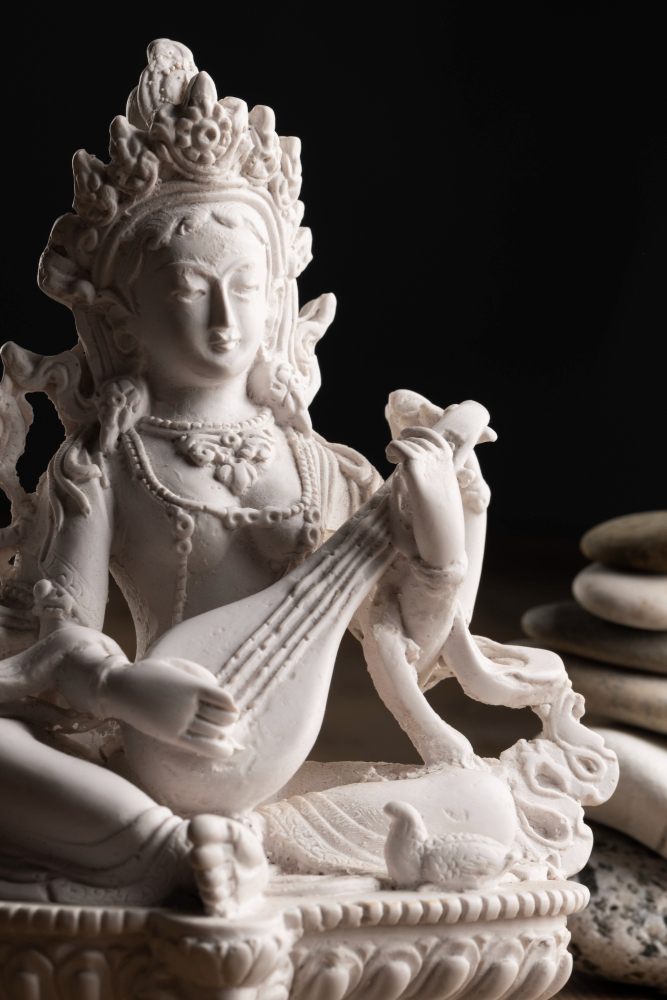
Art is a reflection of human culture, encapsulating the essence of our beliefs, values, and experiences. Among the countless forms of art that have existed, “ancient artz” displays our ancestors’ creativity and resourcefulness. This article goes into the intriguing realm of ancient art, looking at its origins, styles, and importance in human history.
Table of Contents
1. Introduction to the Ancient Arts
Ancient artz refers to the artistic creations of early human civilisations, which span thousands of years and include a wide range of mediums and styles. From early human cave drawings to complex sculptures in ancient Greece and Rome, ancient artz provides insight into our ancestors’ lives and beliefs.
2. The Origins of Ancient Artz

Ancient art dates back to prehistoric times, when early humans began to express themselves through drawings and carvings. These early kinds of art were frequently produced to communicate, tell stories, or convey religious beliefs. As civilisations evolved, so did their artistic activities, resulting in the formation of unique styles and techniques.
Ancient Artz in Prehistoric Times: The earliest known instances of ancient artz are cave paintings discovered around the world, including the Lascaux Caves in France and the Altamira Caves in Spain. These paintings, which date back more than 30,000 years, feature animals, hunting scenes, and abstract symbols, revealing the close relationship between early humans and their surroundings.
Development of Ancient Artz: Art evolves together with society. The move from nomadic to established populations resulted in new kinds of artistic expression, such as pottery, sculpture, and architecture. These early works established the groundwork for the various and sophisticated art forms that would emerge from ancient civilisations.
3. Styles in Ancient Artz
Ancient art is distinguished by its diversity, with each civilisation establishing its own distinct style. Below, we look at some of the most significant ancient art forms from around the world.
Egyptian art
Egyptian art is one of the most well-known genres of ancient art, with a particular style and use of symbolism. Ancient Egyptian art was inextricably linked to religion and the afterlife, with most of it made to honour the gods or to secure the deceased’s safe passage to the next life.
Key Features of Egyptian Art:
- Hieroglyphics is a style of writing that employs symbols and images.
- Sculptures and statues: Frequently depict gods, pharaohs, and other significant characters.
- Frescoes and paintings: Found in tombs and temples, these show scenes from daily life, religious rituals, and the afterlife.
Greek and Roman Art
Greek and Roman art are inextricably intertwined, and Roman art was significantly influenced by older Greek styles. These civilisations are recognised for their achievements in sculpture, architecture, and pottery.
Key features of Greek art:
- Classical sculptures emphasise idealised human shapes and proportions.
- Pottery depicts vivid images from mythology and daily life.
- Architecture: The evolution of column orders (Doric, Ionic, Corinthian).
Key Features of Roman Art:
Realism in sculpture is focussing on detailed, real portrayals of individuals.
- Mosaics are intricate mosaics fashioned using minute bits of stone or glass.
- Engineering and architecture involve the use of arches, domes, and concrete in massive constructions.
Chinese Art
Chinese art is one of the world’s longest continuous traditions, dating back over 5,000 years. It is distinguished by its emphasis on harmony, balance, and the natural world.
Key features in Chinese art:
- Calligraphy is the art of beautiful writing and is regarded as the highest form of art in Chinese culture.
- Ink and Wash Painting: Simple and elegant depictions of landscapes, flowers, and birds.
- Ceramics, including the famed blue and white porcelain.
Indian art
Indian art is intensely spiritual and religious, with a long legacy of sculpture, painting, and architecture. Ancient Indian art depicts the subcontinent’s many cultural and religious traditions.
Key features in Indian art:
- Sculpture depicts gods, goddesses, and mythological scenes.
- Temple architecture is elaborate and decorative, including complex carvings and patterns.
- Miniature paintings are small, detailed paintings that generally feature court events or religious subjects.
4. Materials and Techniques in Ancient Artz

The materials and techniques employed in ancient art differed widely depending on the place and resources available. Below is a table that summarises some of the key materials and techniques employed by several ancient civilisations.
| Civilization | Materials Used | Techniques Employed |
| Egypt | Stone, wood, gold, and papyrus | Carving, painting, inlay, and frescoes |
| Greece | Marble, Bronze, Clay | Sculpture, ceramics, and fresco painting |
| China | Silk, ink, paper, and porcelain | Calligraphy, painting, and ceramics |
| India | Stone, wood, metal, and textiles | Carving, painting, weaving, and metallurgy |
| Rome | Marble, concrete, and glass | Sculpture, mosaic, architecture |
These materials and techniques represent the resources available to these ancient civilisations, as well as their cultural values and technological accomplishments.
5. Symbolism and Themes in Ancient Artz.
Ancient artists relied heavily on symbolism, employing images and motifs to convey deeper ideas. Ancient art frequently addressed themes such as religion, mythology, nature, and the human experience.
Common Themes in Ancient Artz:
- Religion & Spirituality: Many ancient artworks were designed to honour the gods or to be used as offerings in religious ceremonies. Examples include ancient Greek deity statues and Egyptian tomb frescoes.
- Nature: Nature was a popular theme in ancient art, with painters taking inspiration from the natural world. This is visible in Chinese landscape paintings and Native American ceramics with animal motifs.
- Human Experience: Ancient art frequently featured scenes from everyday life, such as farming, hunting, and social events. These works of art shed light on people’s lifestyles in antiquity.
Symbolism in Ancient Artz:
- Chinese Art: The dragon (symbol of power and strength) and the phoenix (symbol of immortality) were common symbols in Chinese art.
- Egyptian Art: Symbols such as the ankh (symbol of life) and the scarab beetle (symbol of rebirth) were commonly used in Egyptian art.
- Greek Art: Mythological figures and symbols, such as the laurel wreath (symbol of victory), were prevalent in Greek art.

Image Credit: Image by freepik
6. The Significance of Ancient Artz in Modern Times
Ancient art continues to impact modern art and culture, inspiring artists, architects, and designers. Many of today’s artistic traditions are based on techniques and styles pioneered by ancient civilisations.
Influence in Modern Art:
- Reviving Classical Styles: The Renaissance saw a renaissance of Greek and Roman art, with artists like Michelangelo and Leonardo da Vinci deriving inspiration from ancient sculpture and architecture.
- Cultural Heritage: Many countries’ cultural heritage includes ancient artefacts. Efforts to preserve and study historical artworks have resulted in a renewed respect for early civilisations’ artistic achievements.
Ancient Artz with Contemporary Design:
- Architecture: Many modern buildings incorporate elements of classical architecture, such as columns and arches, into their designs.
- Fashion and Jewellery: Fashion and Jewellery Designers frequently draw influence from ancient art, including themes and styles from Egypt, Greece, and Rome into their designs.
- Visual Arts: Contemporary artists continue to investigate ideas and techniques from ancient art, creating works that honour the past while pushing the boundaries of modern art.
7. Preservation of Ancient Artz.
Preserving old art is critical to understanding our history and cultural heritage. Natural disasters, conflicts, and negligence have all contributed to the loss or deterioration of many ancient artworks over time. However, ongoing efforts to preserve and restore these works have contributed to future generations’ appreciation of the beauty and significance of ancient art.
Challenges of Preservation:
- Environmental Factors: Ancient artworks can deteriorate when exposed to sunlight, moisture, and temperature fluctuations.
- Human impact: Looting, vandalism, and improper handling have resulted in the destruction of numerous ancient artefacts.
- Technological constraints: The materials and techniques used in ancient art can be challenging to preserve using modern methods.
Efforts in Preservation
- Restoration Projects: Many organisations and institutions work to restore ancient artworks by repairing and stabilising them with advanced techniques.
- Museums and Exhibitions: Museums play an important role in preserving and displaying ancient artefacts by providing a regulated atmosphere that protects them from deterioration.
- Education and awareness: Raising awareness about the value of preserving ancient artefacts is critical to ensuring that these works are preserved for future generations.
8. FAQs about Ancient Artz
Q1: What is ancient artz?
A: Ancient artz refers to the artistic works of early human civilisations, such as paintings, sculptures, pottery, and architecture. These works frequently reflect the cultural, religious, and social values of their time.
Q2: What are some of the common materials used in ancient art?
A: Stone, wood, clay, metal, and textiles were all often utilised materials in ancient art. The materials used were frequently determined by the civilization’s available resources.
Q3: How is ancient art different from modern art?
A: Ancient art frequently explored religious and mythical topics, with a strong emphasis on symbolism. Modern art, on the other hand, has a wider range of themes and forms, frequently focussing on abstract concepts and personal expression.
Q4: Why is it necessary to preserve ancient art?
A: Preserving ancient artefacts is critical because they provide vital insights into the history and culture of early civilisation. These works are also significant components of our shared cultural heritage.
Q5: How does ancient art inspire modern art and design?
A: Ancient art has had a considerable impact on modern art and design, with many artists and designers being inspired by ancient civilisations’ techniques, styles, and subjects.
9. Conclusion.
Ancient art is a rich and diverse discipline that provides insight into the past by illuminating the creativity, beliefs, and experiences of early human civilisations. From prehistoric cave paintings to ancient Greek sculptures, these works continue to inspire and captivate us today. As we continue to study and preserve historical arts, we acquire a better grasp of our own history and the enduring power of artistic expression.
Exploring the varied forms, materials, and subjects of ancient art allows us to not only appreciate our ancestors’ artistic triumphs, but also recognise the significant impact these works have had on moulding our world. Whether through the resurrection of classical styles or the infusion of ancient elements into contemporary design, ancient artz continues to be a major and influential force in the art world.
Keep Daily Idea Hub on your bookmark to get the new updates of more interesting article like this.



